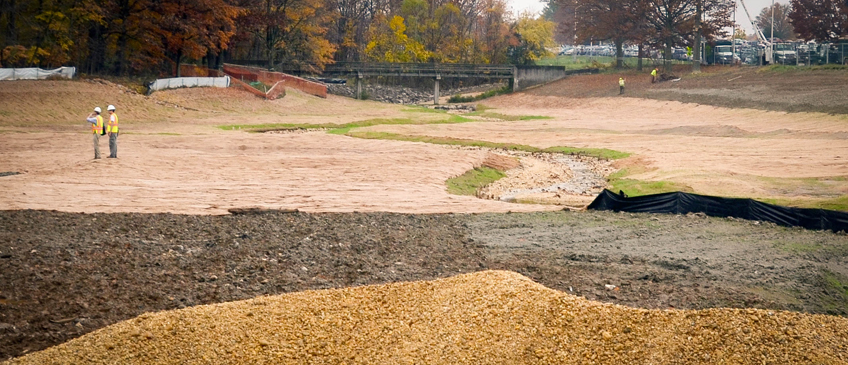Date: December 8, 2015
News - The Importance of Biosoil for Retention Ponds

Studies have shown that retention ponds can fail for several reasons. Improperly mixed materials can create failed sideslopes, the incline of the cut or fill portion of the basin or pond, or other areas of the pond as reported by field representatives and can be a contributing factor.
Retention ponds are constructed with the primary purpose of treating and storing stormwater runoff. While these ponds significantly improve water quality for surrounding bodies of water and minimize erosion, improper installation and a lack of required maintenance can lead to some costly problems.
When Pervious Concrete or other pervious surfaces are not a viable option for an area to address stormwater management practice, a retention pond is specified. These basins catch trash, debris and help remove petroleum, fertilizers, sediments, bacteria and other harmful substances. Proper design and maintenance is highly important for these to perform properly.
The major reasons why these ponds fail can include: poor vegetation management, clogged inlets or outlets, storage capacity of pond reduced due to sediment accumulation, failed sideslopes and inadequate access so maintenance can be implemented.
Reports of contractors mixing soil materials on site with a bobcat is not the most efficient means of installing the material for sideslopes and the overall pond. Biosoil, after all, was created to act like a filter and draw out pollutants and contaminants so they do not enter our water system. Improperly mixed soils can conflict with the required filtration rate of the designed retention pond.
Order your bioretention soil properly mixed and ready for placement with the peace of mind that acceptable drainage will occur as the pond was designed for.